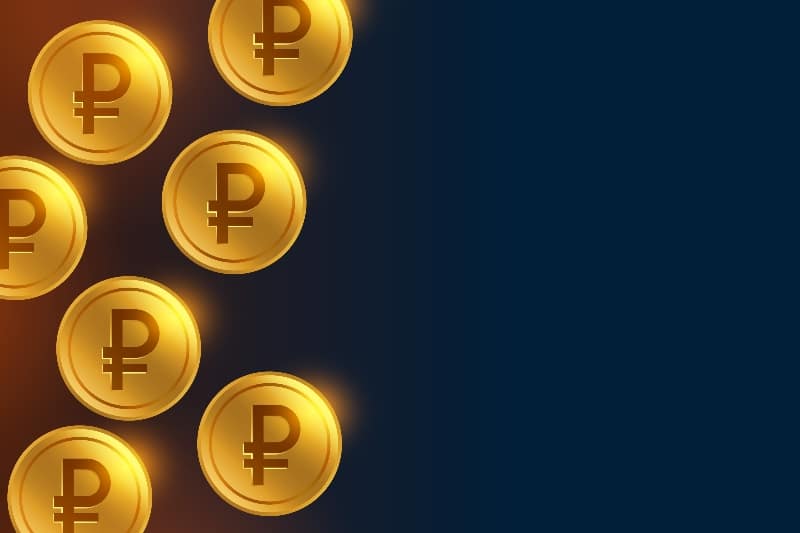Russia has begun work on creating platforms for cross-border stablecoin settlements, according to Russia’s Deputy Finance Minister.
Summary
The new platform for cross-border stablecoin payments
The real news, however, may have come last Tuesday, when Deputy Finance Minister Alexey Moiseyev announced that Russia would be working with several friendly countries on the creation of clearing platforms for cross-border stablecoin settlements.
JUST IN: 🇷🇺 Russian Deputy Minister of Finance says they're working on platforms for cross-border settlements in #stablecoins.
— Watcher.Guru (@WatcherGuru) September 6, 2022
In this regard, Moiseyev stated that:
“We are currently working with a number of countries to create bilateral platforms in order not to use dollars and euros. We offer mutually acceptable tokenized instruments that will be used on these platforms, which are essentially clearing platforms that we are currently developing with these countries. Stablecoins can be pegged to some generally recognized instrument, for example, gold, the value of which is clear and observable for all participants.”
The announcement made by the Russian deputy minister seems to be in contradiction to the law passed in July, which basically bans cryptocurrency payments in the country. But this law was probably made to prevent abuse and the use of cryptocurrencies for criminal purposes, as cryptocurrencies have been growing in popularity for some time, especially since the outbreak of war.
The relationship between Russia, crypto, and stablecoins
Russia, which has been in the eye of the storm for months over its invasion of Ukraine and strangled by harsh international sanctions imposed by the international community, is now seriously considering turning to cryptocurrencies for cross-border payments. The Prime Minister of Russia, Mikhail Mishustin, said in late August that cryptocurrencies are needed for foreign payments
“We need to intensively develop innovative areas, including the adoption of digital resources. It is a safe alternative for all parties who can guarantee uninterrupted payments for the supply of goods from abroad and for export.”
On 4 July, it had been the turn of the Russian Central Bank to open up the possibility of making cryptocurrency mining legal in the country. The Central Bank itself has been working hard for months on a new digital ruble, which would now be in the final stages of testing.
Last March, just weeks after the outbreak of the conflict, the head of the Duma’s Energy Committee, Pavel Zavalny, had opened up to the possibility of Russia accepting oil and gas supply payments in cryptocurrencies.

Cryptocurrencies in the world, a great tool for circumventing international sanctions
Digital currencies, as is already the case in other countries such as Iran, Venezuela or North Korea, could be used precisely to ease the burden of international sanctions. In the Global Crypto Index Adoption of 2021, Russia ranked 18th in the world among the countries where cryptocurrency adoption is most widespread.
In April, Coinbase, one of the world’s largest exchanges, had closed the accounts of thousands of Russian users, precisely to prevent the possibility that international sanctions could somehow be circumvented thanks to cryptocurrencies, thus responding to an appeal by Ukraine’s minister of technological innovation, Mykhailo Fedorov.
The Russian Deputy Minister did not report which countries Russia would be collaborating with on this new platform, but it is not hard to imagine that it could be friendly countries, such as China, Turkey, and Iran. According to Duma sources, the proposal could be discussed in October.
This new proposal certainly represents yet another chapter in a complicated relationship between Russia, its leader Vladimir Putin and cryptocurrencies, which in past years have been harshly opposed by the Kremlin’s top leadership, resulting in frequent abrupt changes of opinion on the matter.
Vladimir Putin’s thoughts on cryptocurrencies
At an event three months ago, Putin himself described mining as definitely beneficial and something to be watched very carefully. In December, the Russian premier openly said that cryptocurrencies have every right to exist, but in July, it was the premier himself who focused strongly for a law banning cryptocurrency payments in the country.
At the same time, Putin has since stated several times that he would not consider using cryptocurrencies for international payments or to pay for oil and gas supplies. But after nearly seven months of war and sanctions, evidently the Russian government is beginning to consider all possible scenarios in order to continue its aggressive policy with the entire Western world and defy the sanctions imposed on it.
Stablecoins are becoming more and more popular in the cryptocurrency markets because they are a kind of guarantee for the markets characterized by very high volatility of cryptocurrencies. Their peculiarity and guarantee for investors and markets is that they are pegged to another asset, such as another currency or an asset like gold. The main stablecoin is Tether, which at $67.5 billion, is the third most capitalized cryptocurrency, after Bitcoin and Ethereum.
These digital coins are often used by crypto traders to quickly enter and exit positions in other coins or tokens, without the need to convert their position first to a fiat currency.
This explains the Russian government’s decision to rely on these types of currencies to conduct international transactions, even bypassing the ban on the SWIFT banking platform that is creating several issues for Russian federation transactions. Both Russia and China are among the countries where the study of a new state digital currency (CDBC) would be in the most advanced state, with a view above all to overcoming the supremacy of the dollar in world financial markets.




